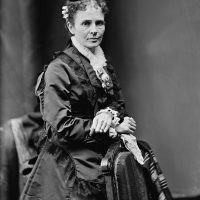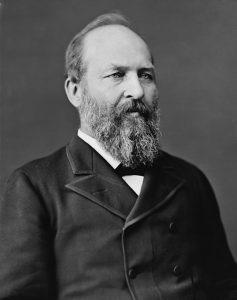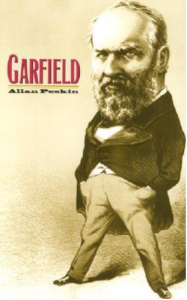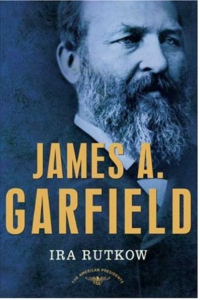James A. Garfield
James A. Garfield Biography
Overview
James Abram Garfield (November 19, 1831 – September 19, 1881) was the 20th president of the United States, serving from March to September 1881. Garfield was shot by an assassin four months into his presidency and died two months later. He is the only sitting member of the United States House of Representatives to be elected to the presidency [1]
Lucretia Garfield in the 1870s

Quick Facts:
| Full Name | James Abram Garfield |
| Birth Date | November 19, 1831 |
| Birth Place | Orange Township, Cuyahoga County, Ohio |
| Death Date | September 19, 1881 |
| Career | Teacher, Public Official |
| Spouse(s) | November 11, 1858, to Lucretia Rudolph (1832–1918) |
| Children | Eliza A. (1860–1863), Harry A. (1863–1942), James R. (1865–1950), Mary (1867–1947), Irvin M. (1870–1951), Abram (1872–1958), Edward (1874–1876) |
| President No. | 20 |
| Presidency Begin | March 4, 1881 |
| Presidency End | September 19, 1881 |
| Vice President(s) | Chester Arthur (1881) |
| Administation | Millercenter.org |
Garfield was born the youngest of five children on November 19, 1831, in a log cabin in Orange Township, now Moreland Hills, Ohio. Orange Township had been in the Western Reserve until 1800;[32] He would be the last President to be born in a log cabin. His father, Abram, would die in 1833 and he would be raised by his very strict mother Eliza.
Garfield was raised very poor and without a father with made for a rough childhood. He would escape by reading all the books he could find. [33] He would leave home at 16 years old and found work on a canal boat managing the mules. After only 6 weeks he would get sick and returned home. His mother convinced him to not go back to work but to go to school instead. [34]
Garfield was elected to the Ohio Senate in 1859 as a Republican. During the secession crisis, he advocated coercing the seceding states back into the Union. In 1862, when Union military victories had been few, he successfully led a brigade at Middle Creek, Kentucky, against Confederate troops. At 31, Garfield became a brigadier general, two years later a major general of volunteers.[71]
While serving in the Army in early 1862, Garfield was approached to run for Congress from Ohio’s newly redrawn, heavily Republican 19th district. He refused to campaign for the nomination, leaving that to political managers who secured it at the local convention in September 1862 on the eighth ballot. In October, he defeated D.B. Woods by a two-to-one margin in the general election for a seat in the 38th Congress.[72]
President Lincoln persuaded him to resign his commission—it was easier to find major generals than to obtain effective Republicans for Congress. Garfield repeatedly won reelection for 18 years, and became the leading Republican in the House.[73]
At the 1880 Republican convention, Garfield failed to win the presidential nomination for his friend John Sherman. Finally, on the 36th ballot, Garfield himself became the “dark horse” nominee. By a margin of less than 10,000 popular votes, Garfield defeated the Democratic nominee, General Winfield Scott Hancock.[74]
Resources
Web Sites:
Books:
REFERENCES
- **Presidential Flag Graphic source: Zscout370 at English Wikipedia, CC BY-SA 3.0 <http://creativecommons.org/licenses/by-sa/3.0/>, via Wikimedia Commons
- (1) https://en.wikipedia.org/wiki/James_A._Garfield
- (32) Peskin, Allan (1978). Garfield: A Biography. Kent, Ohio: Kent State University Press. ISBN 978-0-87338-210-6. pp. 4-6
- (33) Peskin 1978, pp. 10–11.
- (71) https://www.whitehousehistory.org/bios/james-garfield
- (72) Rutkow, Ira (2006). James A. Garfield. New York, New York: Macmillan Publishers. ISBN 978-0-8050-6950-1. OCLC 255885600. p.148
- (73) (74) https://www.whitehousehistory.org/bios/james-garfield




